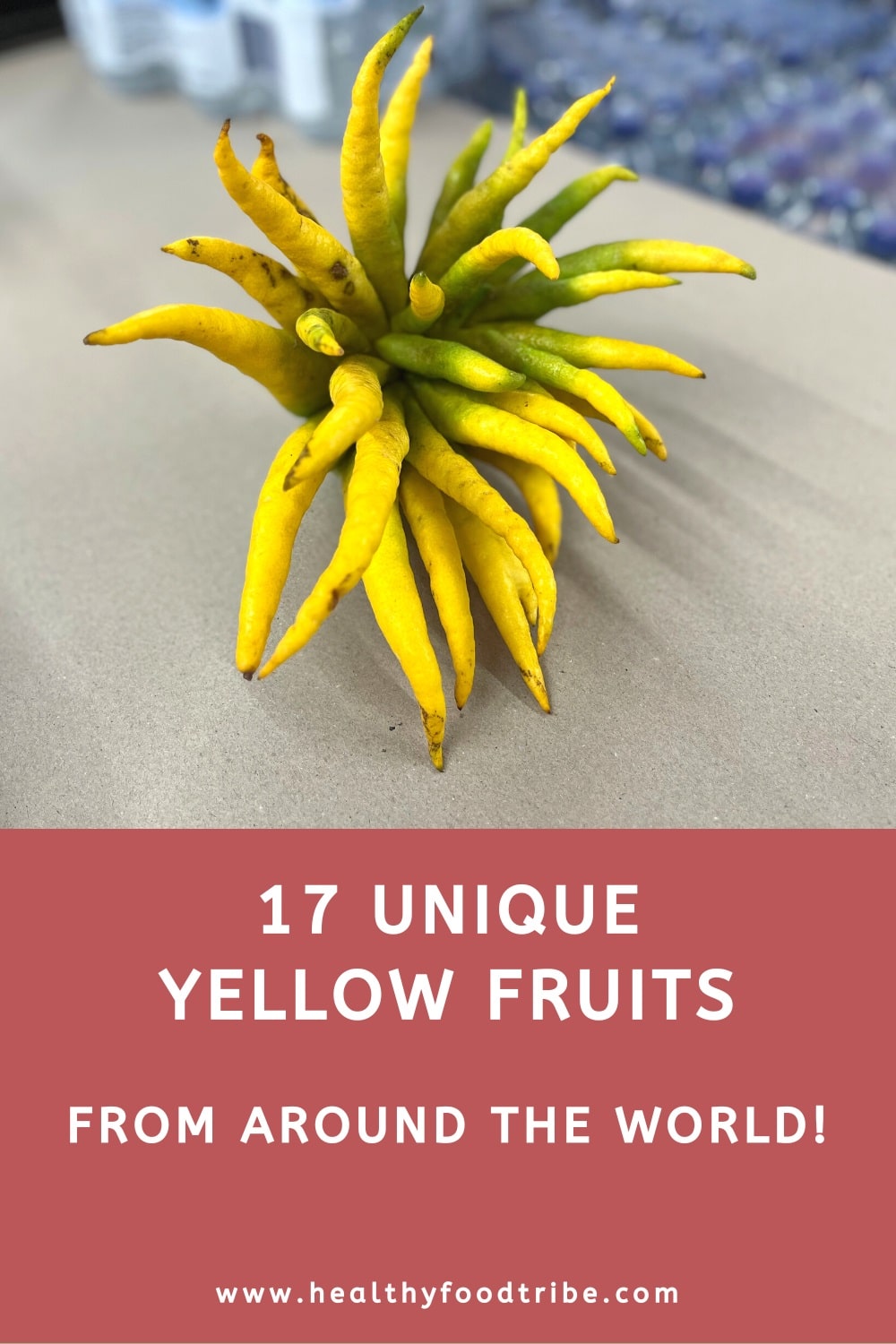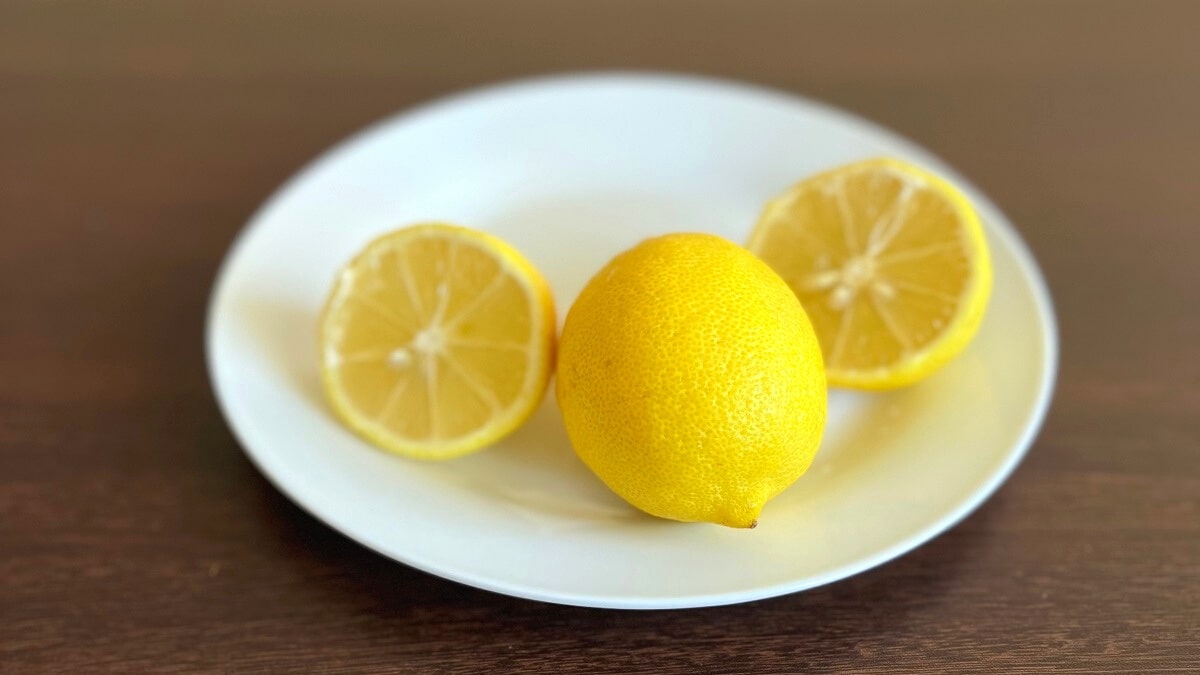Last updated: April 13, 2024
From tart to sweet, yellow fruits offer a burst of sunshine in every bite. This list shares 17 unique yellow fruits from around the world, from the small and feisty kumquat to the big and creamy durian.
I’ve been on a mission to try as many yellow fruits as possible to add a bit of extra joy to my day. They are not only bright and cheerful, but they’re also incredibly delicious in many different ways.
Below, you’ll find 17 fruits with yellow peel and some with yellow flesh. I’ve included familiar fruits as well as plenty of new discoveries that will add some sunshine to your day and some exotic flavors to your plate.
Also read my list of green fruits or red fruits for more unique fruits to try!
1. Bananas

Let’s kick off this list of yellow fruits with arguably one of the most popular fruits in the world. Bananas are indeed a favorite among humans, monkeys, and parrots alike.
These starchy snacks grow in large clumps of up to 200 fruits, but they don’t grow on trees. The tall, broad-leafed plant we call a banana tree is actually an herb closely related to ginger.
For those unfamiliar, the fruit has a sugary-sweet flavor and a dry but soft texture. The inedible peel changes from light green to deep yellow to black as it ripens. The closely related plantain, which lacks the banana’s sweetness, will also turn yellow but is often sold green and consumed only after the peel turns mostly black.
2. Buddha’s Hand
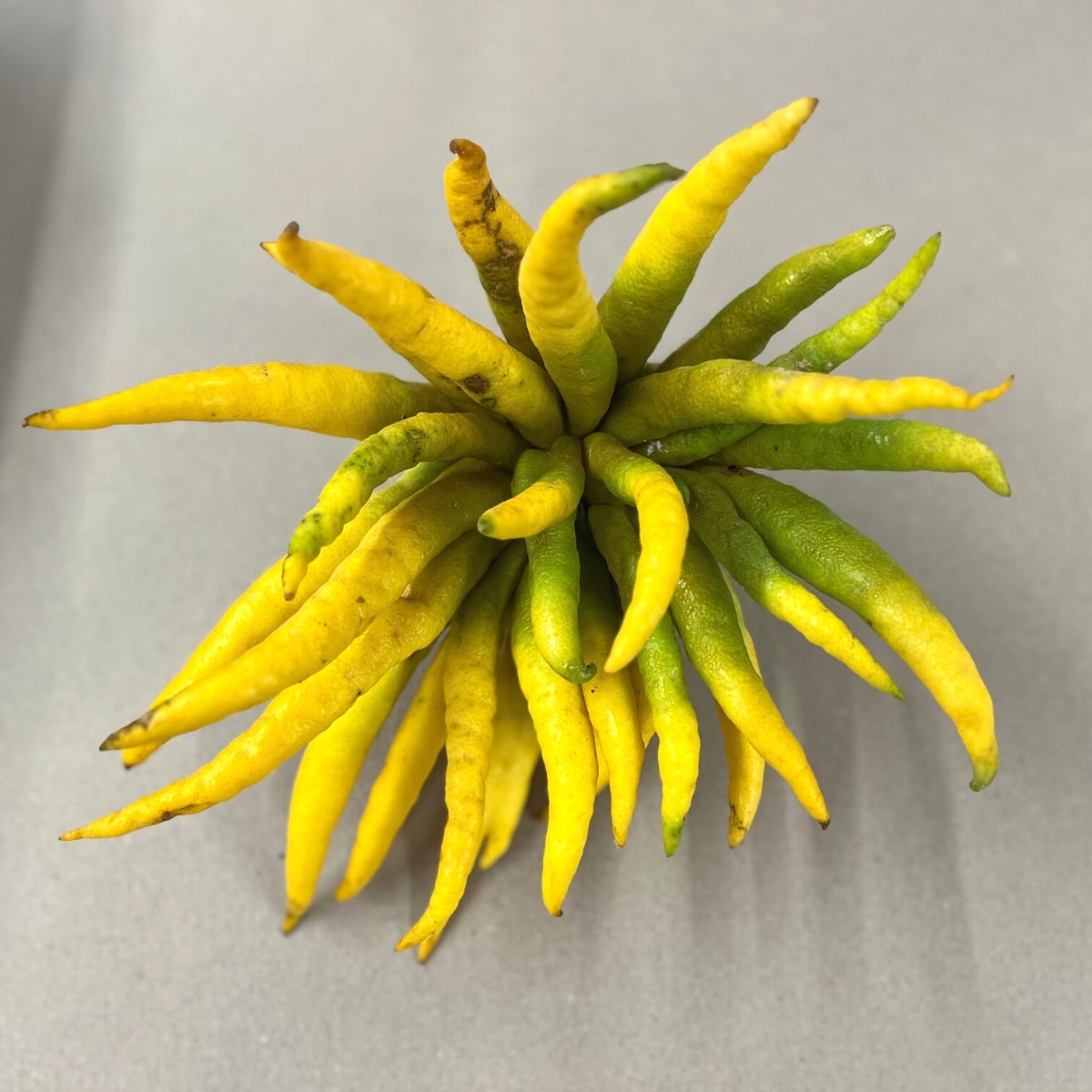
Ever wonder what you’d get if you crossed a lemon with an octopus? The results would probably look a little something like Buddha’s hand, also known as fingered citron.
This strange fruit has the skin of a lemon and the tentacles of an octopus. Inside, there is no pulp or juice, only a thick white pith. But this pith isn’t bitter like that in most citrus fruits and has a pleasant, mild lemon flavor that can be eaten raw.
Buddha’s hand is most often used for its fragrant skin, which can be zested and used as a less sour replacement for lemon in many dishes.
In India, where it originated, and in China, where it is commonly cultivated, this strange fruit is often used as an offering. It is said to symbolize happiness and longevity and is utilized to add a pleasant citrus fragrance to rooms.
3. Longan
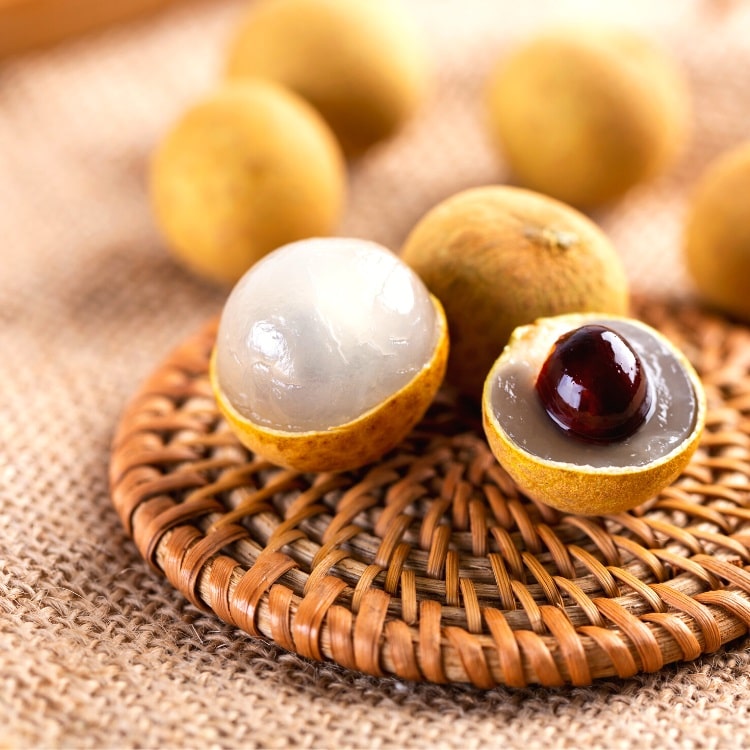
Also known as dragon’s eye, the longan is a tropical fruit native to tropical Asia and China. The word longan means “dragon eye” in Cantonese, and it’s no surprise the fruit was given that name.
The fruit contains a hard, black seed that should not be consumed, nor should the yellow-ish skin. The translucent flesh is nice and juicy, and tastes a little sweet, but not too sweet.
Outside tropical Asia, longan fruits prove to be really hard to find. If you wish to find them, your best bet is Asian grocery stores or larger international fruit markets.
4. Canary Melon
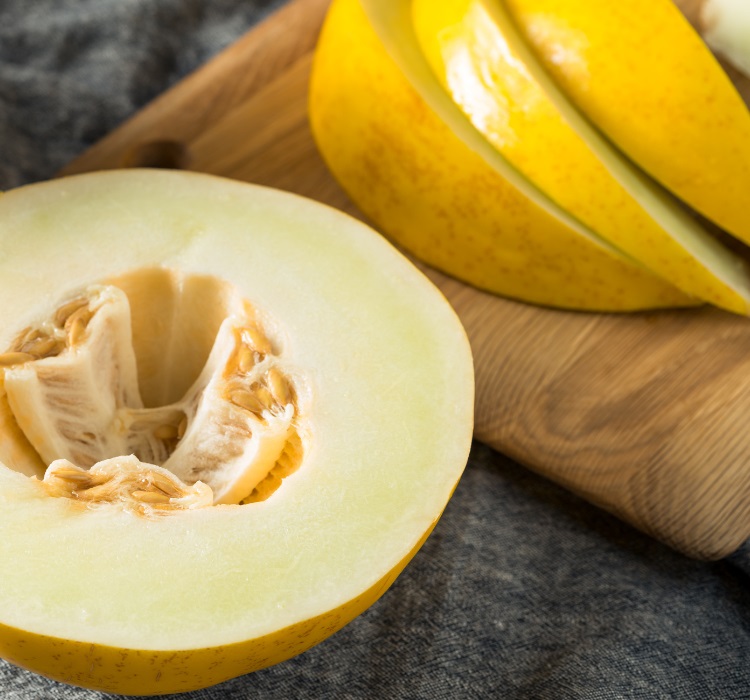
The canary melon has a bright yellow rind that is somewhat waxy and slightly wrinkled. This, combined with its elongated shape, gives the impression of a winter squash. But make no mistake, the flesh inside this fruit is sweet and tender.
Below the thin skin is whitish-yellow flesh that has a texture similar to a pear, but smoother when fully ripe. The flavor is sweeter than honeydew and somewhat reminiscent of cantaloupe or an Asian pear.
Originally grown in Persia, the canary melon is now cultivated throughout much of Asia all the way into Morocco. The Fonzy melon, a smaller cultivar, is grown in Mexico, while other variations are produced in smaller numbers across Europe, and in California and Arizona.
Interested in learning more about melons? Check out my list of melon types for a complete guide to the most popular types of melons in the world.
5. Canistel
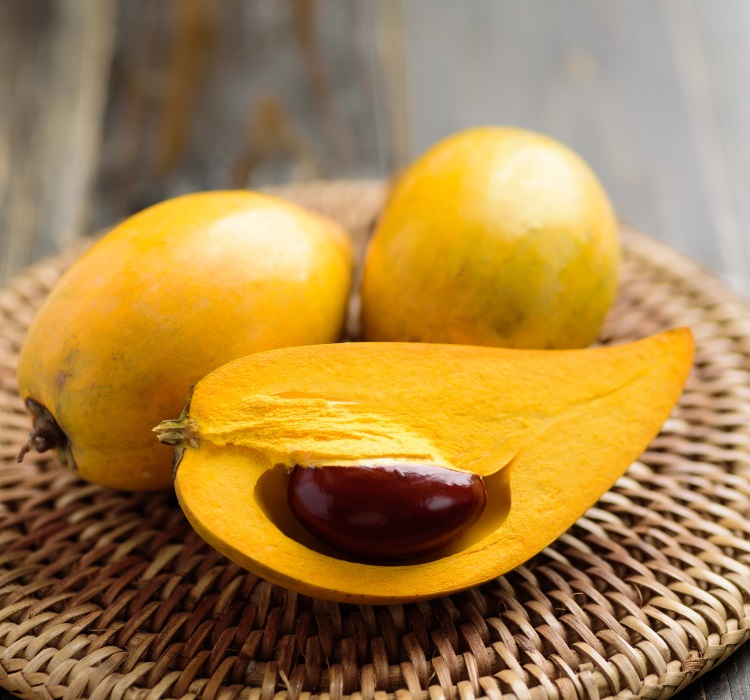
Commonly known as egg fruit, canistel is a bright yellow fruit native to South America. These apple-sized fruits come in two distinct varieties; a round type with a slightly pointed end and an elongate version with a dramatically pointed end.
Both types have a unique texture that is reminiscent of hard egg yolk, hence the name “egg fruit”. The flavor, luckily, is nothing like a hard-boiled egg. It is quite sweet with hints of pumpkin and roasted sweet potato.
The canistel is usually eaten raw, but can also be ground into a powder, dried, and used to make pancakes and sweet breads.
6. Durian

The outside of the durian is somewhere between yellow and greenish-brown, but the inside fruit is pure yellow. These strange, spiky fruits can get quite large, growing up to 7 pounds! They are native to Southeast Asia but can be picked up at specialty produce markets worldwide.
Inside that intimidating shell, you’ll find pods of yellow flesh encompassing large brown seeds. This flesh has a creamy, almost cheesecake-like texture with a sweet, vanilla-caramel flavor. Read my guide on how to eat durian with lots of practical tips.
Much less appealing than its taste–at least to some–is the smell of the durian. While some consider it quite pleasant and fragrant, others find the pungent odor overwhelming or downright disgusting. In fact, the fruit’s odor is so controversial that it has been banned on many forms of public transport throughout the East.
7. Lemon

The lemon is another famous yellow fruit that has been with humankind for millennia, first appearing in written texts around 200 AD. This popular citrus fruit was originally from India, but is now cultivated in temperate regions worldwide.
Like most citrus you’ll find in the grocery store today, lemons are actually a hybrid species between the naturally occurring citron and the hybridized sour orange. Whether this hybridization took place naturally or was human-facilitated, we may never know.
Too sour to eat straight, the lemon is most commonly used as a flavor additive through zest from its rind and juice from its pulp.
8. Loquat
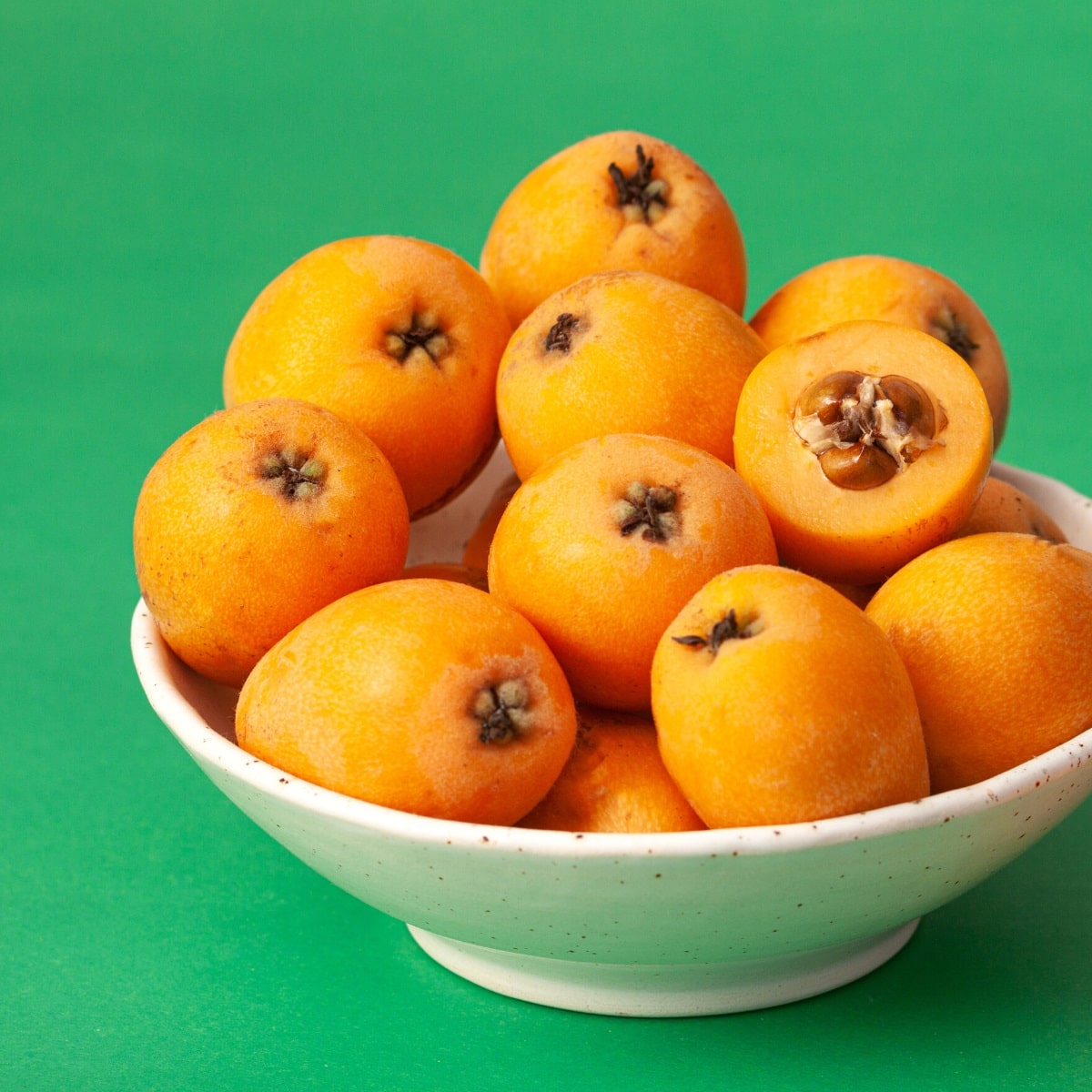
The loquat is a small, yellow/orange fruit about the size of an apricot. They can be round, oblong, or pear-shaped, depending on the cultivar and growing conditions. Other common names for this fruit include Chinese plum, Japanese plum, and Japanese Medlar.
Loquats are native to China where they have been cultivated for many centuries. They now grow readily in high-altitude, subtropical areas of the world, including Japan, Chile, Australia, New Zealand, the Mediterranean, and much of the Middle East.
The loquat is a unique fruit that comes in a bite-sized package. But don’t think you can just bite right into them! Inside this fuzzy little fruit are multiple large, inedible seeds that make preparing and eating loquats a bit tricky. Read my guide explaining how to eat loquat for more information.
9. Kumquat
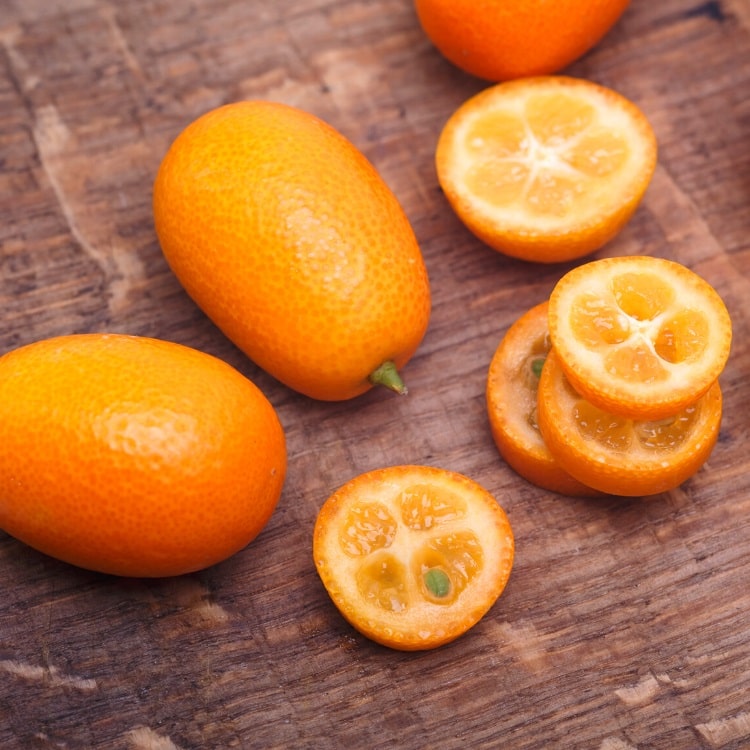
While perhaps more orange than yellow, the delicious and small kumquat fruit deserves a mention on this list of yellow fruits, not only because of its color but also because it’s such a unique fruit.
The tiny kumquat fruit is one of my favorite citrus fruits, mainly because I love eating it as a snack. What’s interesting is that a kumquat can be eaten whole. In other words, the peel is entirely edible and tastes quite sweet. The small seeds inside are also edible.
Kumquats are native to China, but are relatively easy to find as they’re grown in many regions outside Asia. The tree that produces the kumquat fruit can be cultivated in colder, non-tropical climates, so you can certainly find this fruit in Europa and North America.
10. Mango

Mangoes come in a variety of colors, from green to purple to yellow, depending on their cultivar type and ripeness.
The most popular bright yellow varieties include Alphonso, Dasheri, Malgova, and Chausa. While darker-pigmented mangoes tend to have orangish flesh, the inside of most of these types is yellow.
Sweet and slippery with a flavor reminiscent of syrupy, fragrant nectar, it is hard to beat a perfectly ripe mango. That may be why the fruit has been considered sacred in India for over 4,000 years. While it originated there, it has long since spread throughout the world, growing readily in tropical climates in South America, Hawaii, Australia, and beyond.
Interested in learning more about Hawaiian fruits? Check out my list of fruits in Hawaii for a complete guide to the most popular fruits in that beautiful part of the world.
11. Oroblanco
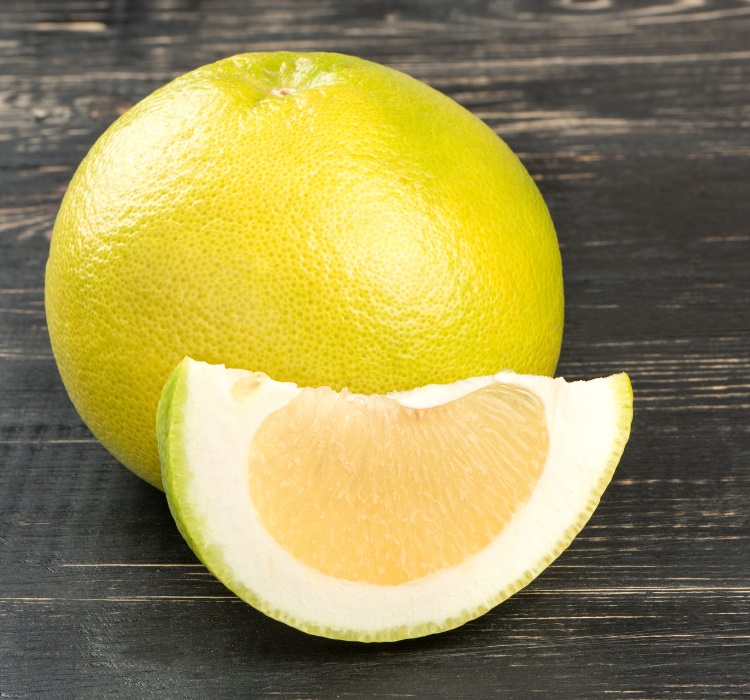
With a name that means “white gold”, the oroblanco fruit has to be something special. This round citrus, similar in size and shape to a grapefruit, starts out green and slowly ripens to pale yellow.
Like most citrus fruits, it is a hybrid, but this one took considerably more care to create than others. Citrus experts at the University of California spent nine years creating the cross in an effort to make a citrus that tastes like grapefruit but without the acidic, bitter bite. They succeeded, and in 1981, the Oroblanco was officially patented.
A cross between a pomelo and a white grapefruit, the Oroblanco is truly white gold for people who want to enjoy a grapefruit that doesn’t require added sugar.
12. Papaya
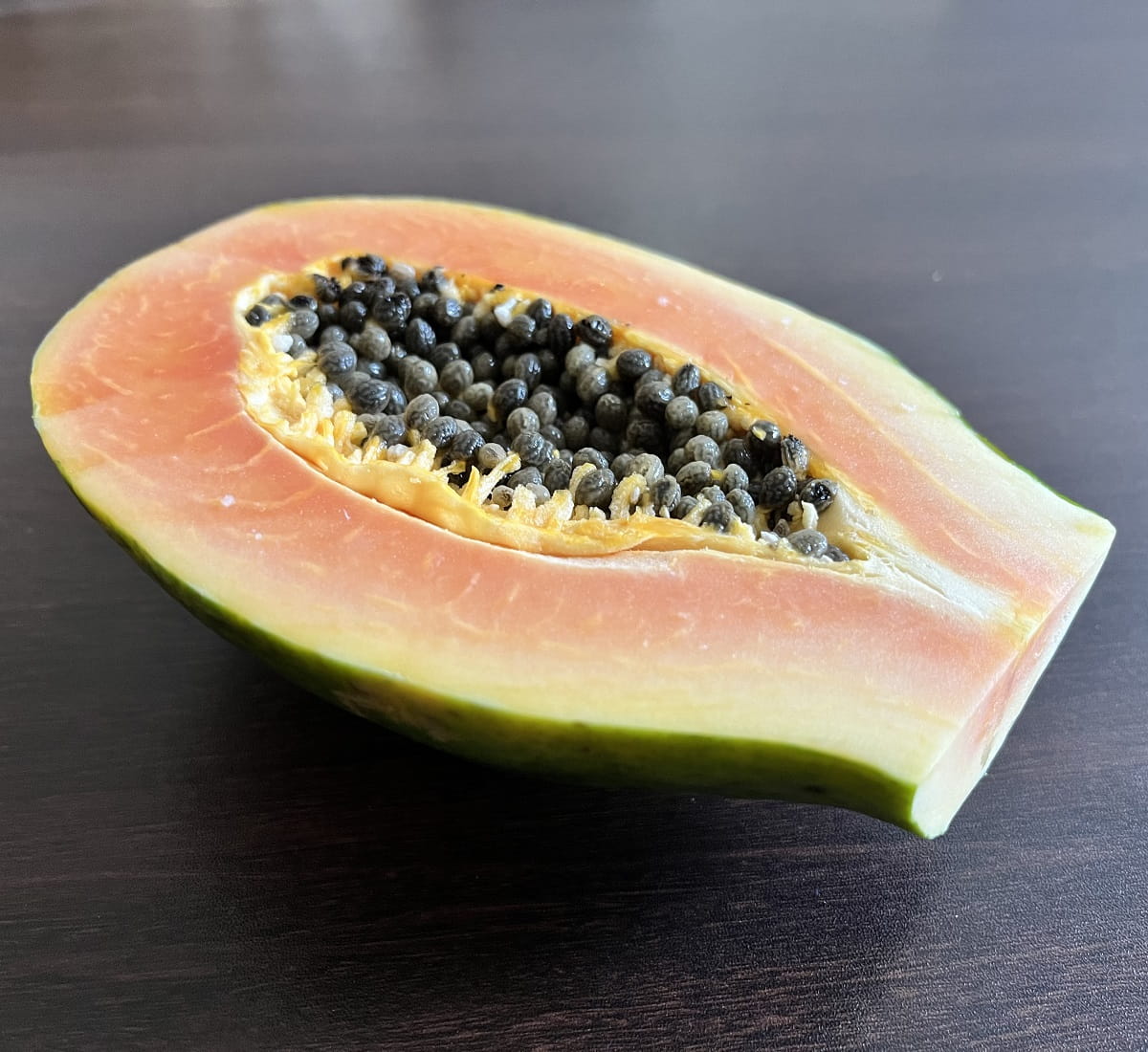
Papayas are tropical, oblong fruits that somewhat resemble an elongated mango or large pear. Their thick skin starts out dark green and ripens to brilliant yellow or yellow-red, depending on the variety. The flesh inside is deep yellow-orange and encases a center filled with hundreds of small round seeds.
These fruits are sweet but not overwhelmingly so and taste somewhat like cantaloupe with a tropical bend. They make a great addition to fruit salads, tropical smoothies, and desserts.
Originating somewhere in southern Mexico or northern Central America, papaya is now common throughout the tropics. It’s an extremely versatile fruit, as papaya can be eaten in various ways.
13. Carambola
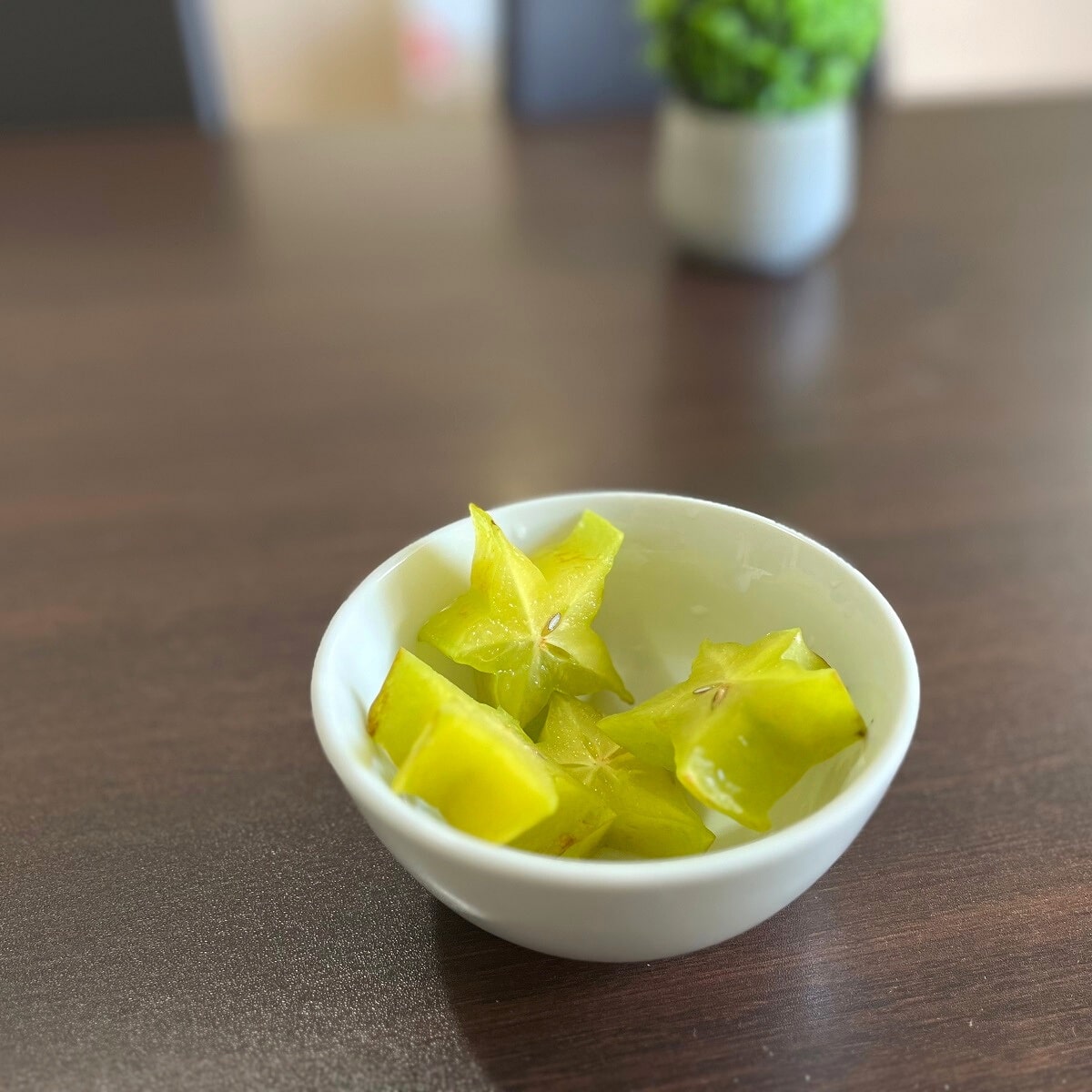
Widely known as starfruit, the carambola is prized for its unique shape. The oblong, waxy fruits have deep ridges that resemble stars when cut into slices. They ripen from pale green to pale yellow and have juicy yellow flesh inside.
The firm, crunchy flesh and edible waxy skin come together to create a mild flavor, somewhat like a green grape with citrusy undertones. They are typically enjoyed raw and make a showy addition to fruit salads.
Considering their popularity in Asia and throughout the tropics, it might surprise you to learn these fruits contain caramboxin, a neurotoxin. Luckily, in most people, this toxin is filtered easily by the kidneys and has no effects. But for those with kidney issues, starfruit can cause nausea and vomiting.
14. Pineapple

The quintessential tropical fruit, the pineapple, is more brown than yellow, at least before it’s fully ripe. As the flesh inside softens and sweetens, the hard outer rind changes from deep green to tannish-brown to light yellow. The flesh itself ranges from pale yellow to deep gold.
In addition to being sweet, slightly tart, and just a touch spicy, pineapple also has the power to heal. Pineapple juice contains bromelain, an enzyme that triggers the body to make substances that help fight swelling and pain.
Pineapples grow on a specific species of bromeliad plant native to South America. Each plant only produces one pineapple at a time. If you plant the top of a pineapple, you can grow your own fruit in just 20 short months.
15. Quince

While the quince may look like a grandmother pear, this unique fruit is actually the sole member of its genus, with a distant relation to pears and apples.
When eaten raw, the flesh is quite hard with an astringent aftertaste, but with a strong, appealing aroma. When cooked, the flesh softens and takes on a more pleasing apple-pear flavor. The cooked fruit makes an excellent topping for ice cream and yogurt, and adds a more aromatic experience to pies and cakes than its cousins.
Native to the region south of the Caspian sea, quince trees are quite hardy and can grow in the arid Middle East and as far north as Scotland.
16. Yellow Dragon Fruit
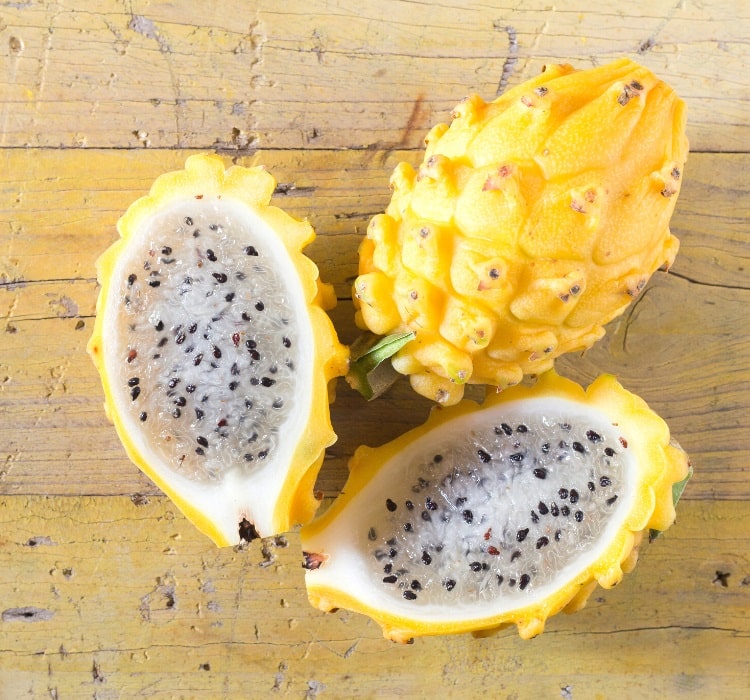
While not as showy as its red and purple-colored cousins, the yellow dragon fruit has just as much to offer in terms of flavor and nutritional content.
The scaly, yellow rind encompasses smooth, soft flesh filled with small black seeds. Also packed into this sweet, highly aromatic, almost perfumy flesh are plenty of antioxidants. As dragon fruit is most often eaten raw, all varieties make a great addition to fruit salads.
Like all dragon fruits, this one is produced by a species of cactus. Unlike others in the genus, these yellow fruits possess the same thorns as the rest of the plant. These are typically clipped off before being sold.
17. Yuzu
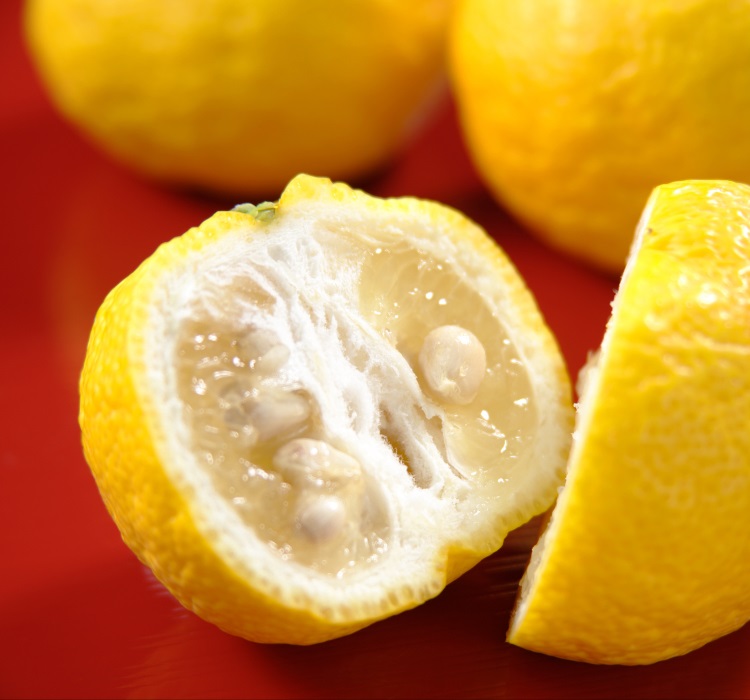
The yuzu fruit looks like a round lemon and often has uneven, thick skin. Like other citrus fruits, it is a hybrid, coming from a cross between a mandarin orange and a citrus cavaleriei.
They are typically the size of a small orange but can get as large as a grapefruit. The fruit starts out deep green like a lime and slowly ripens to lemon yellow. It is fairly bitter and sour, with a flavor between a lime and a grapefruit.
Like lemon, it is used almost entirely as a flavoring agent. The zest and juice are added to a variety of dishes, including custards, fish, hot pots, and teas.
